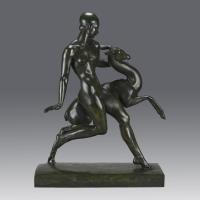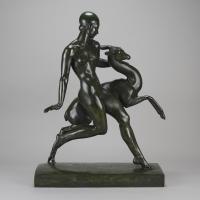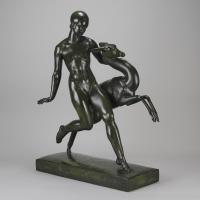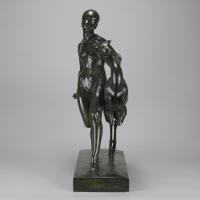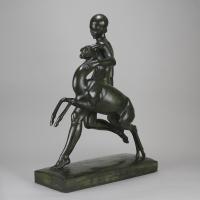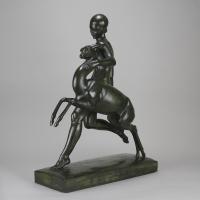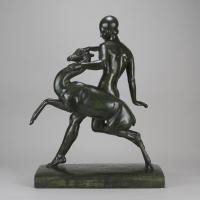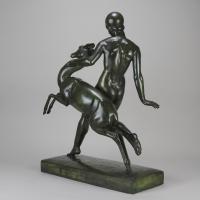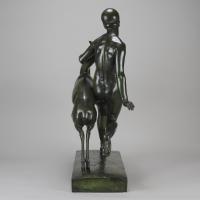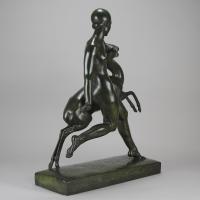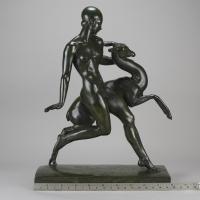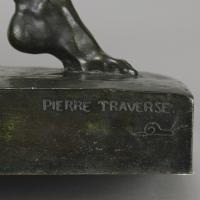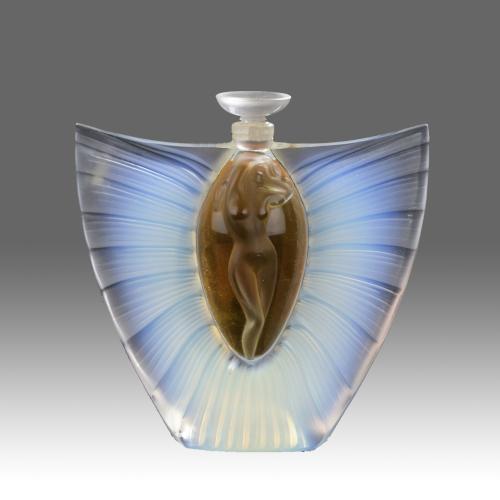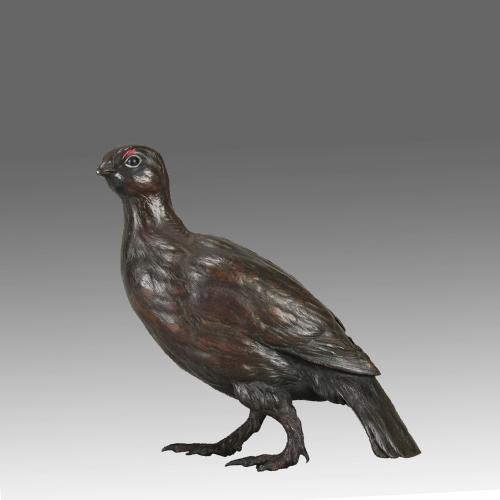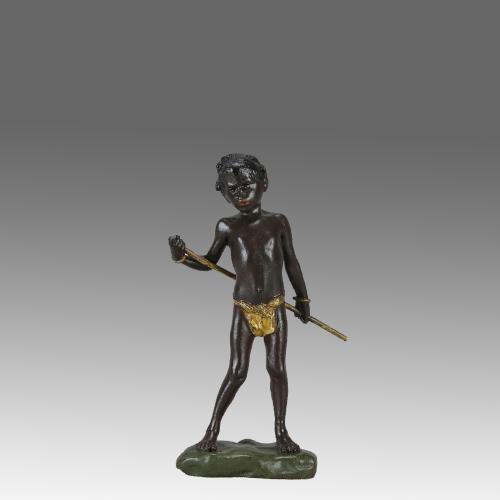
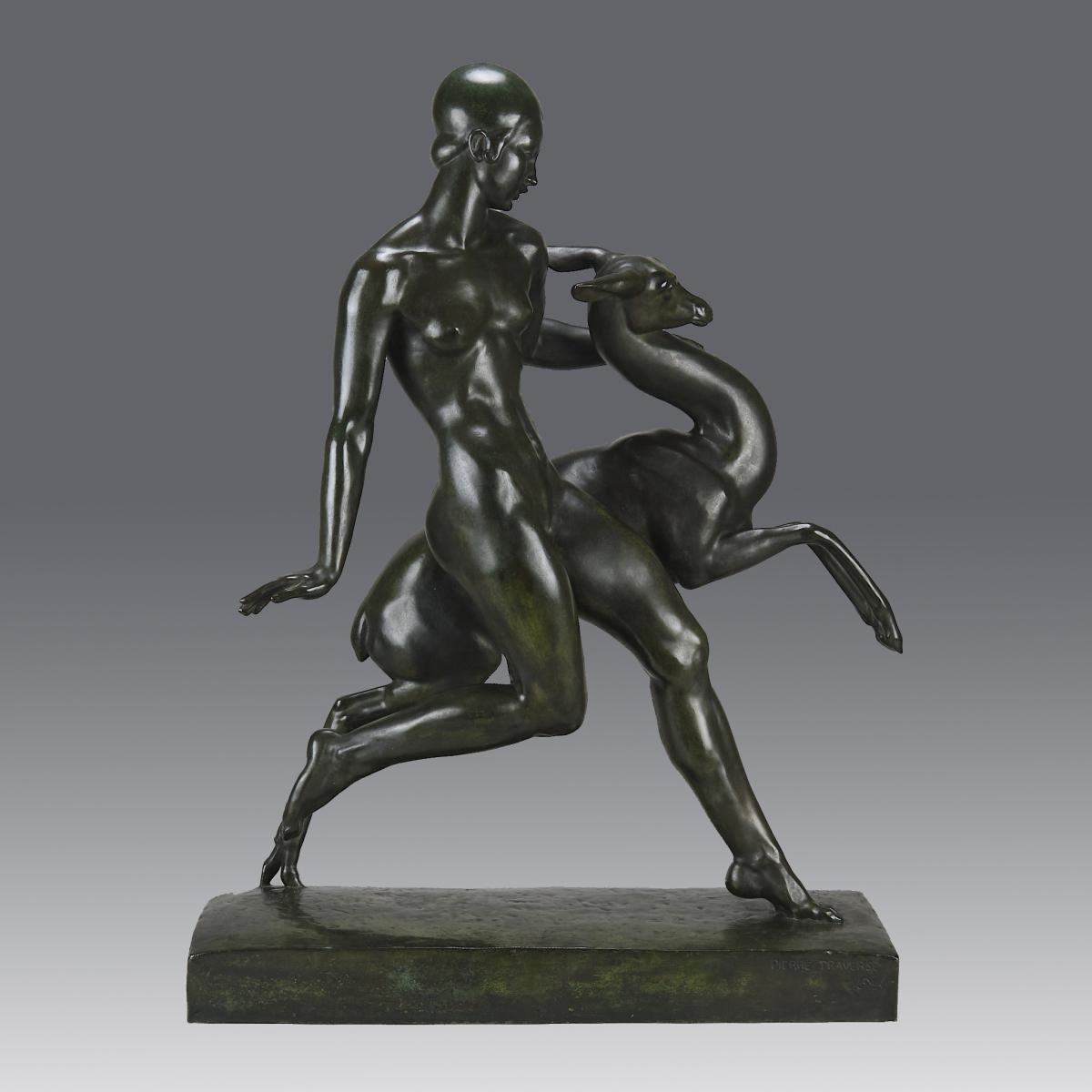
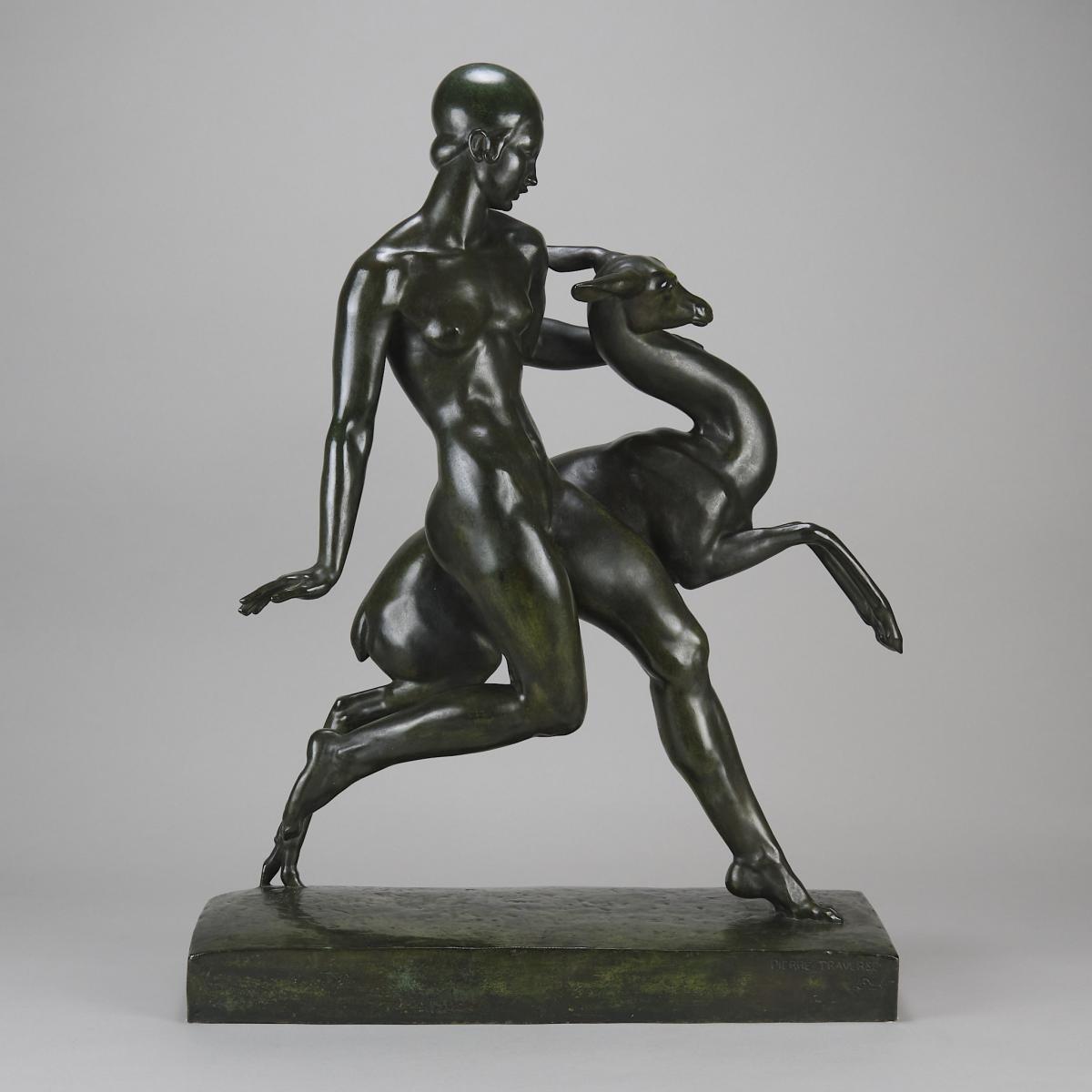
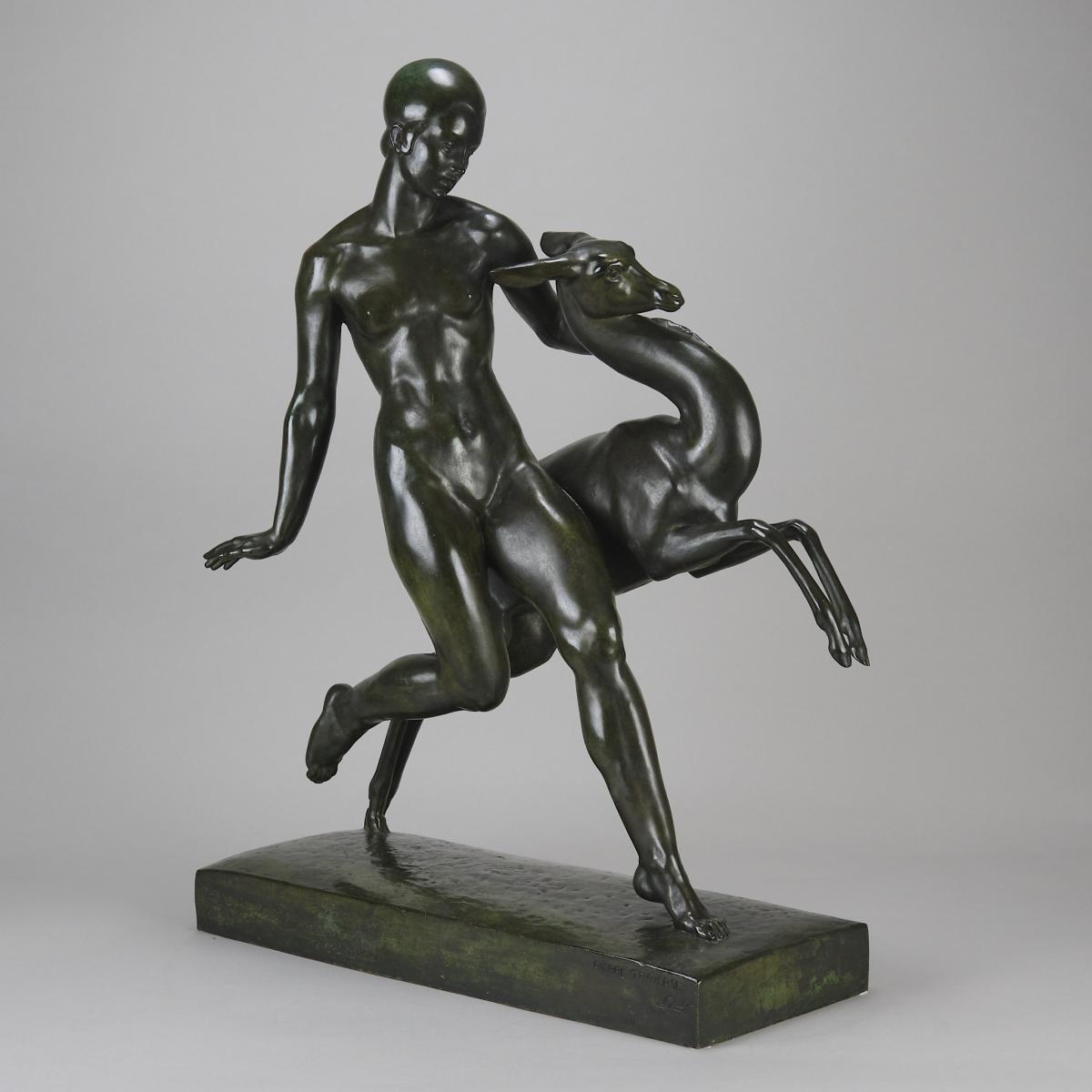
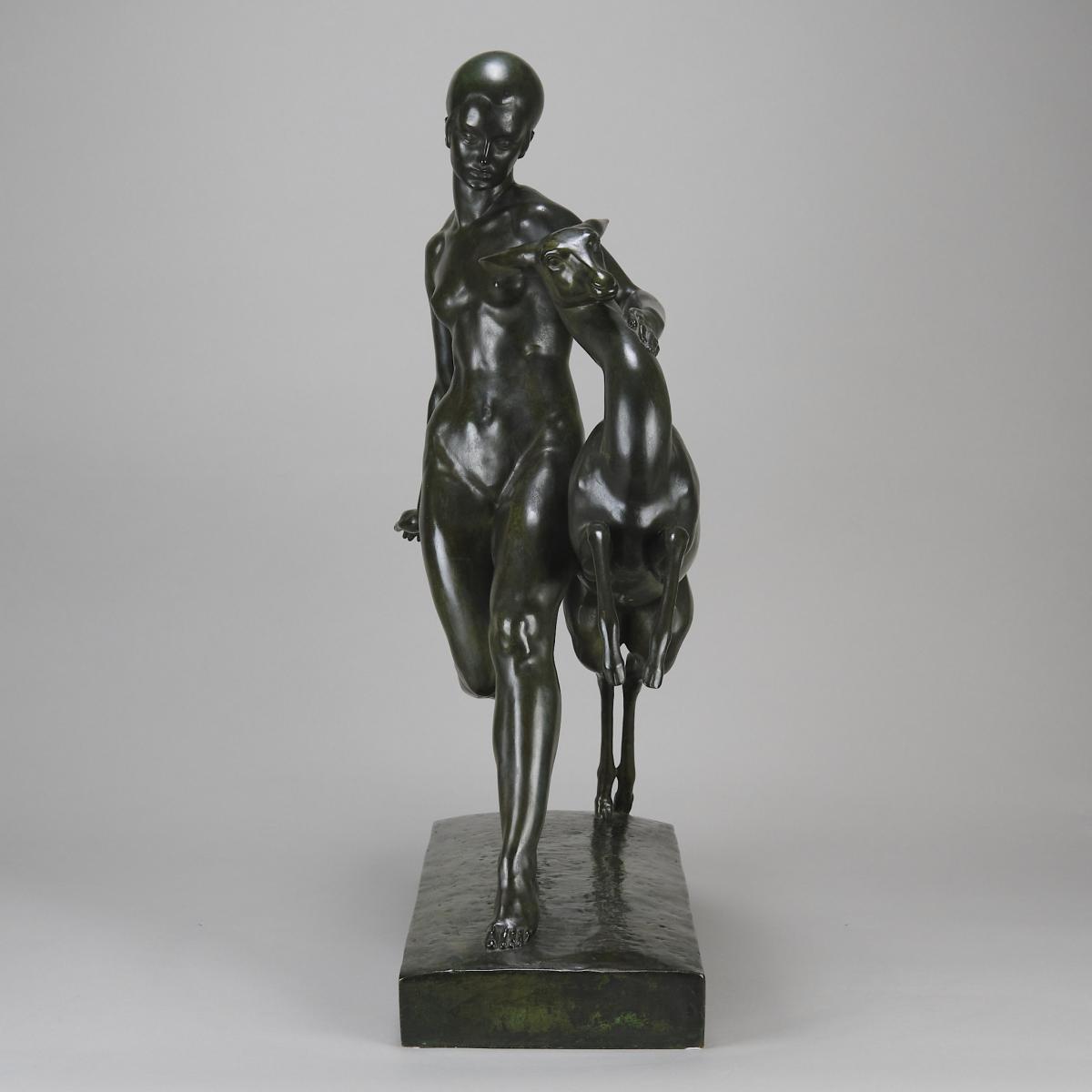
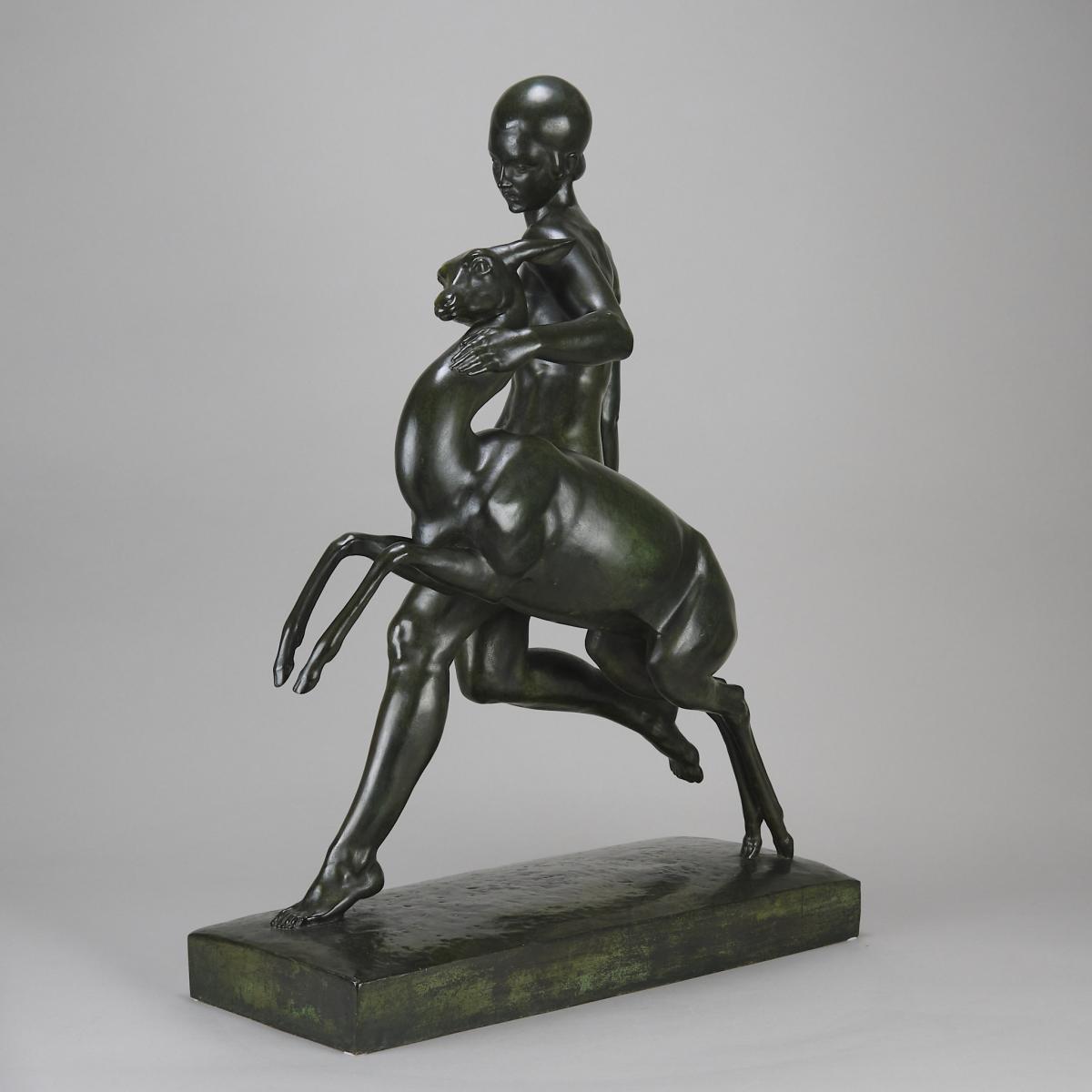
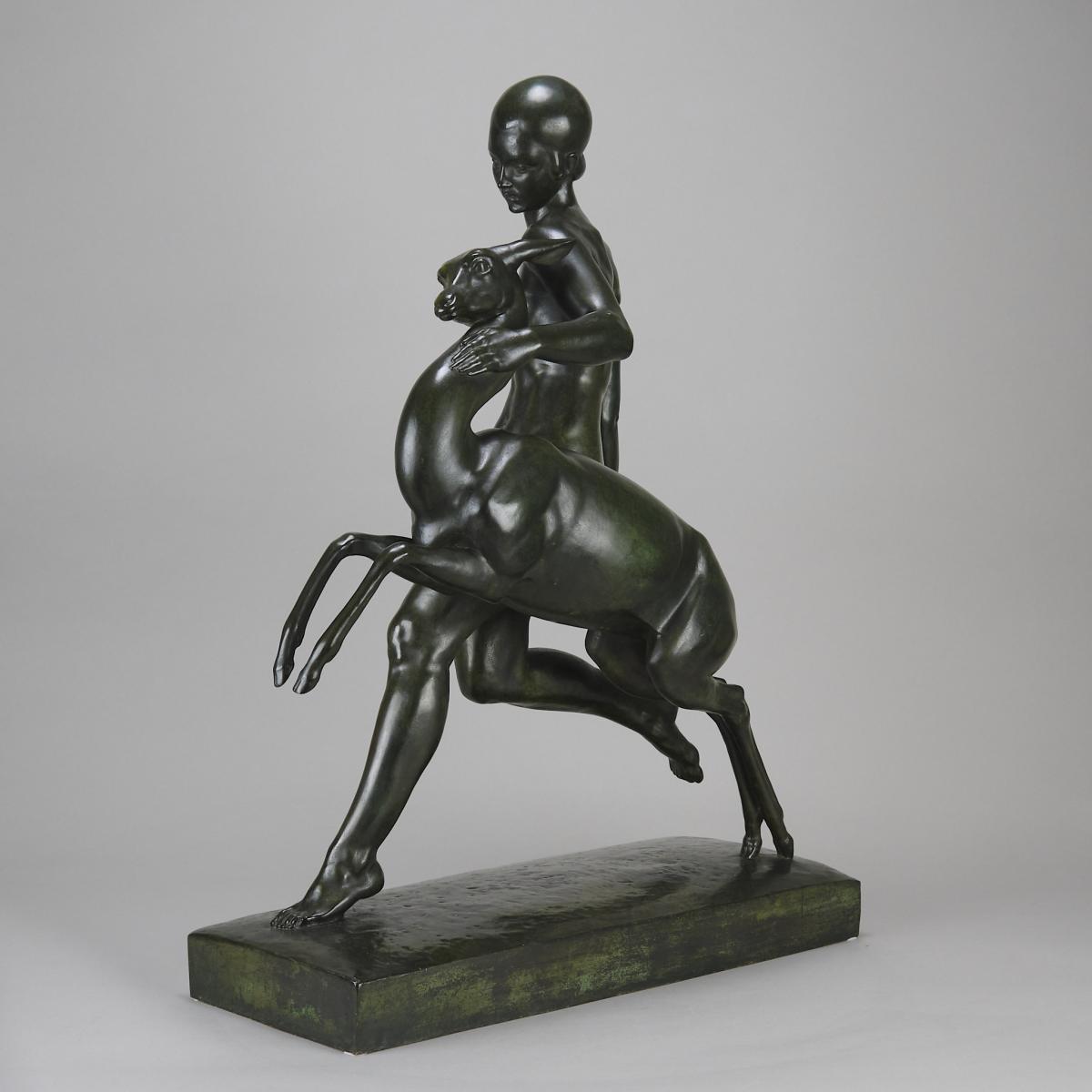
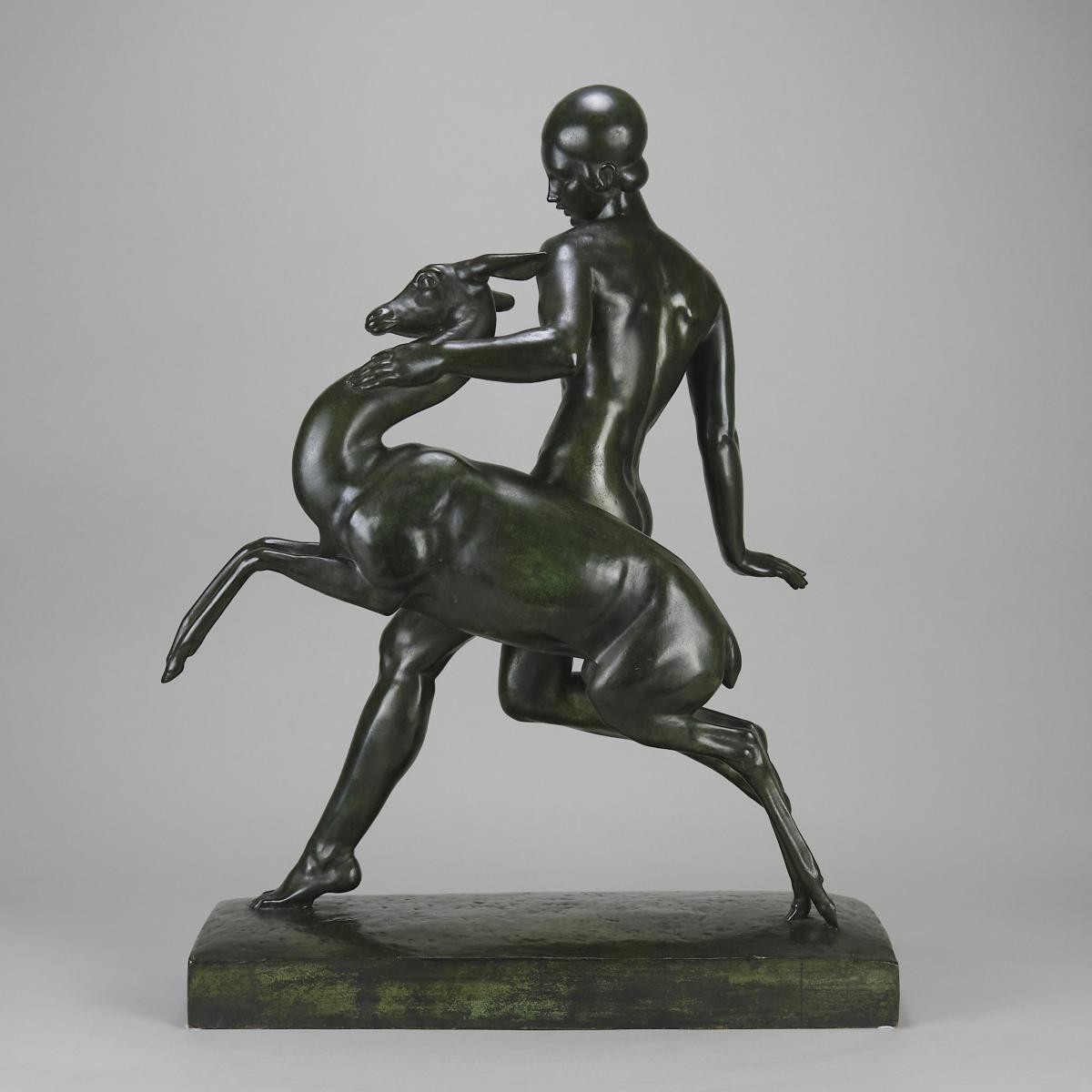
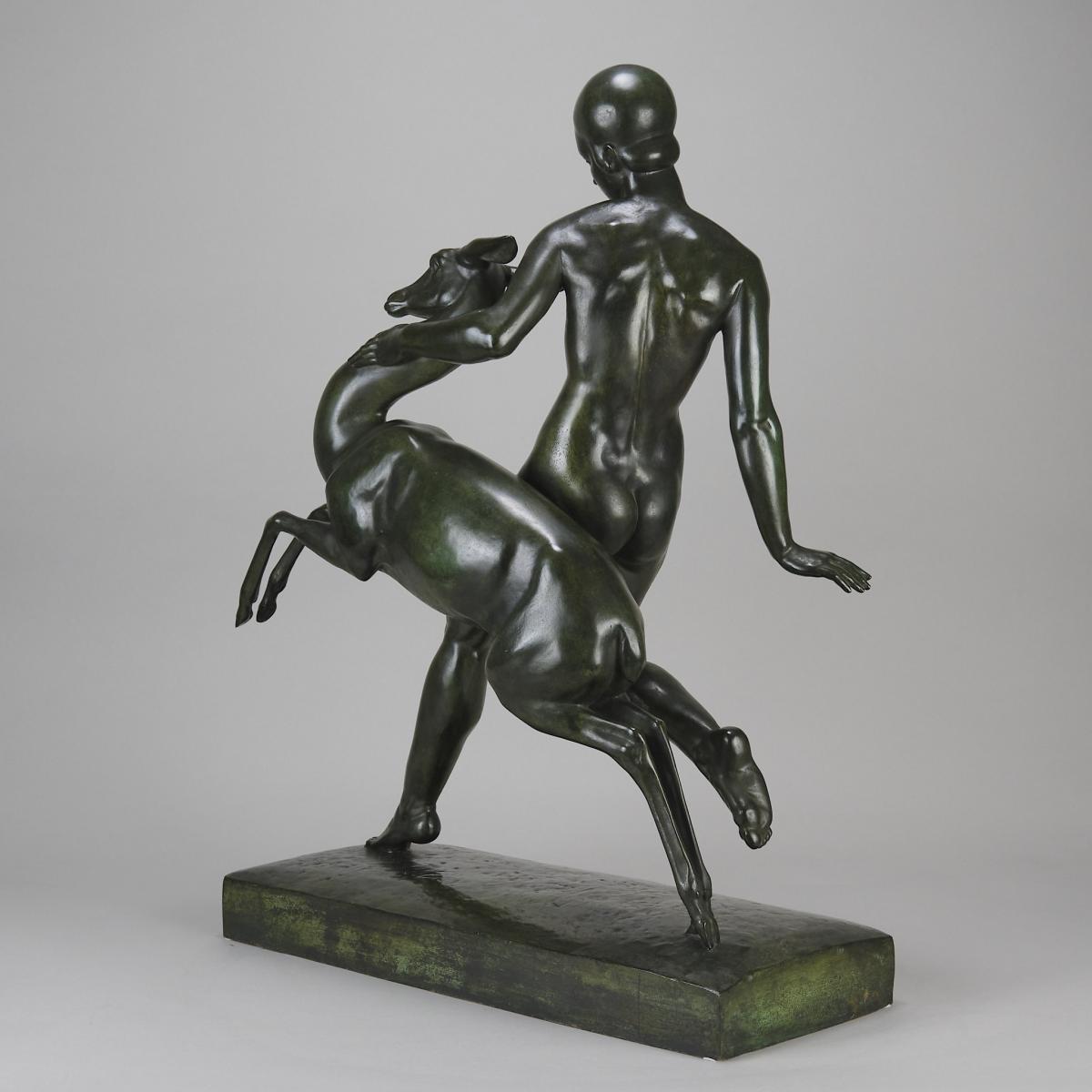
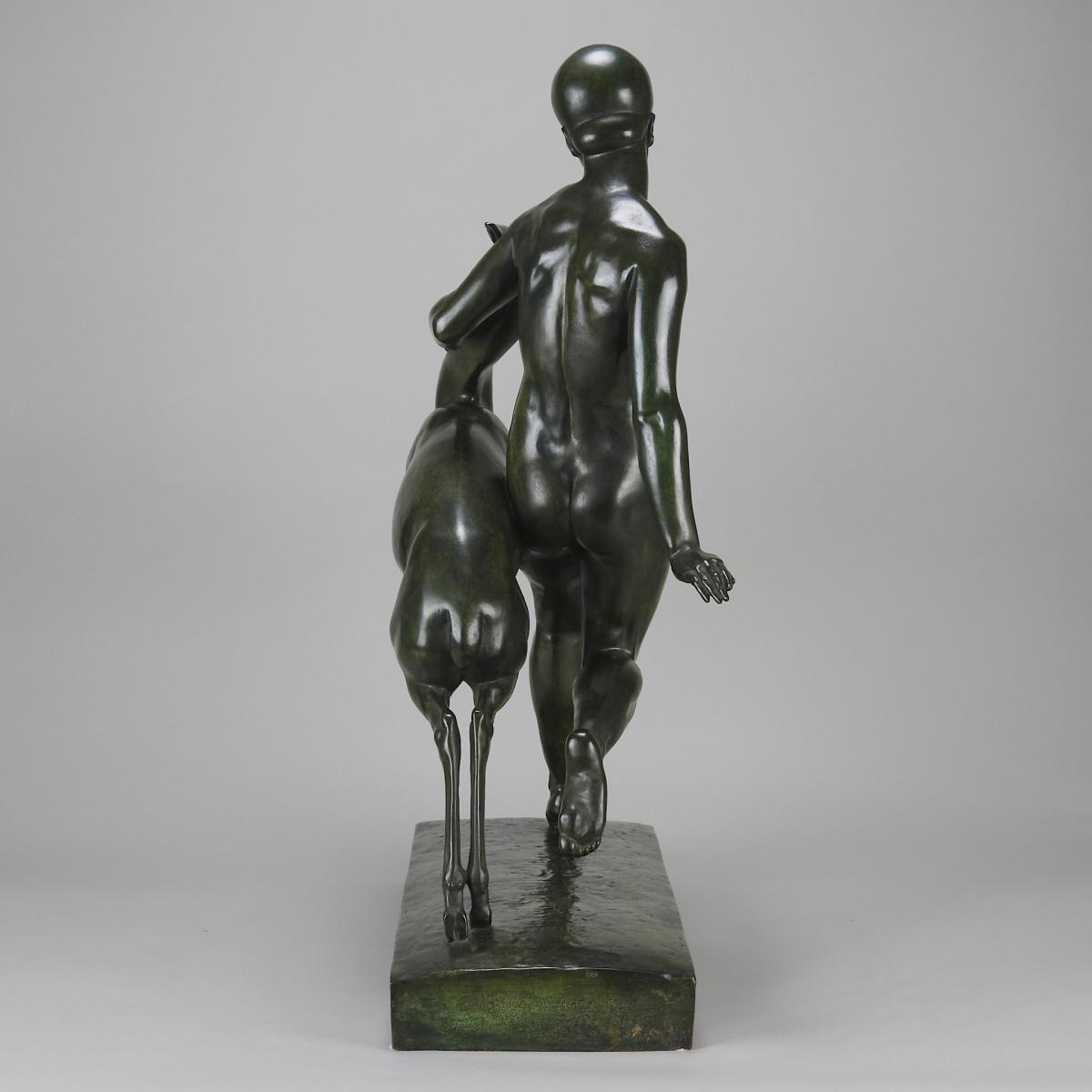
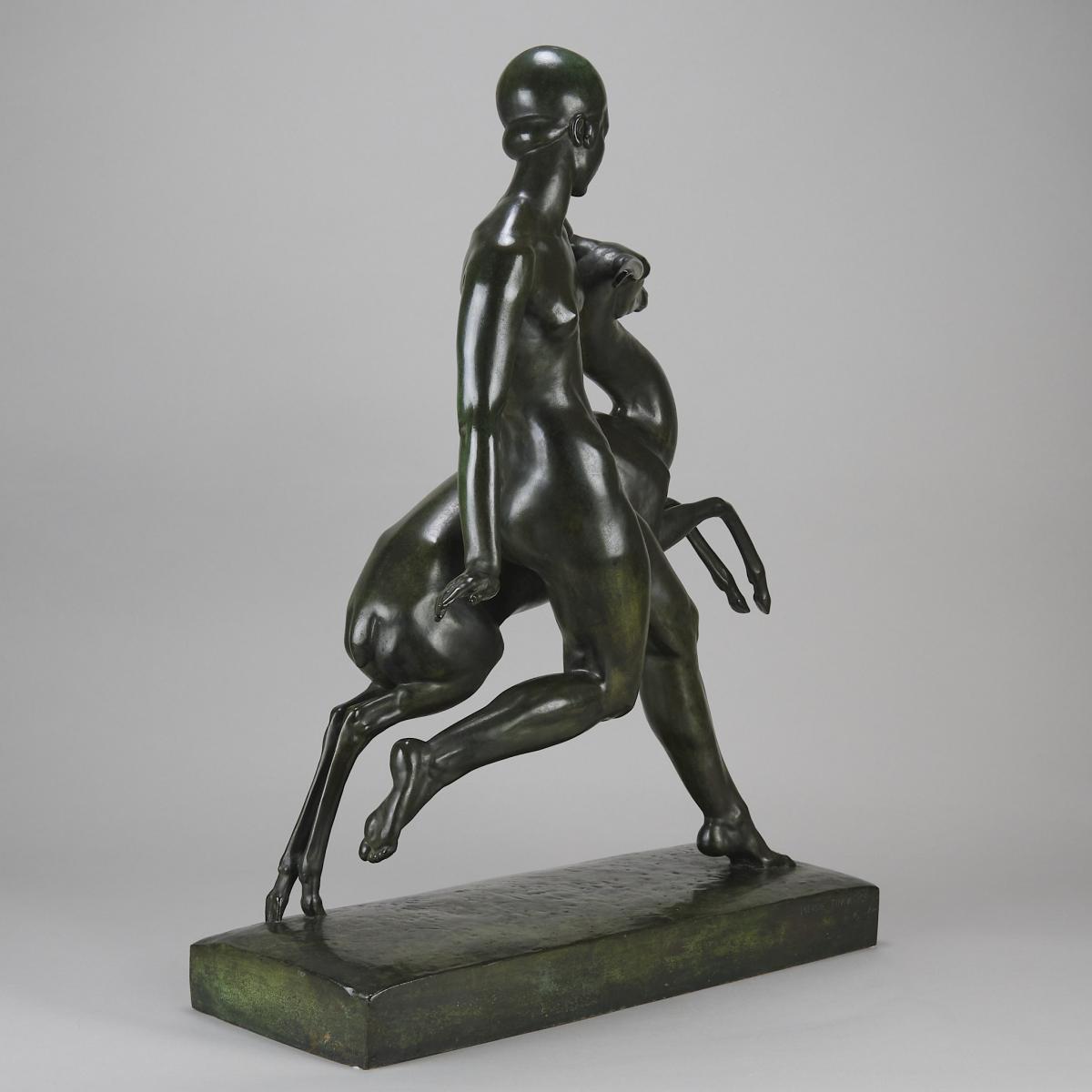
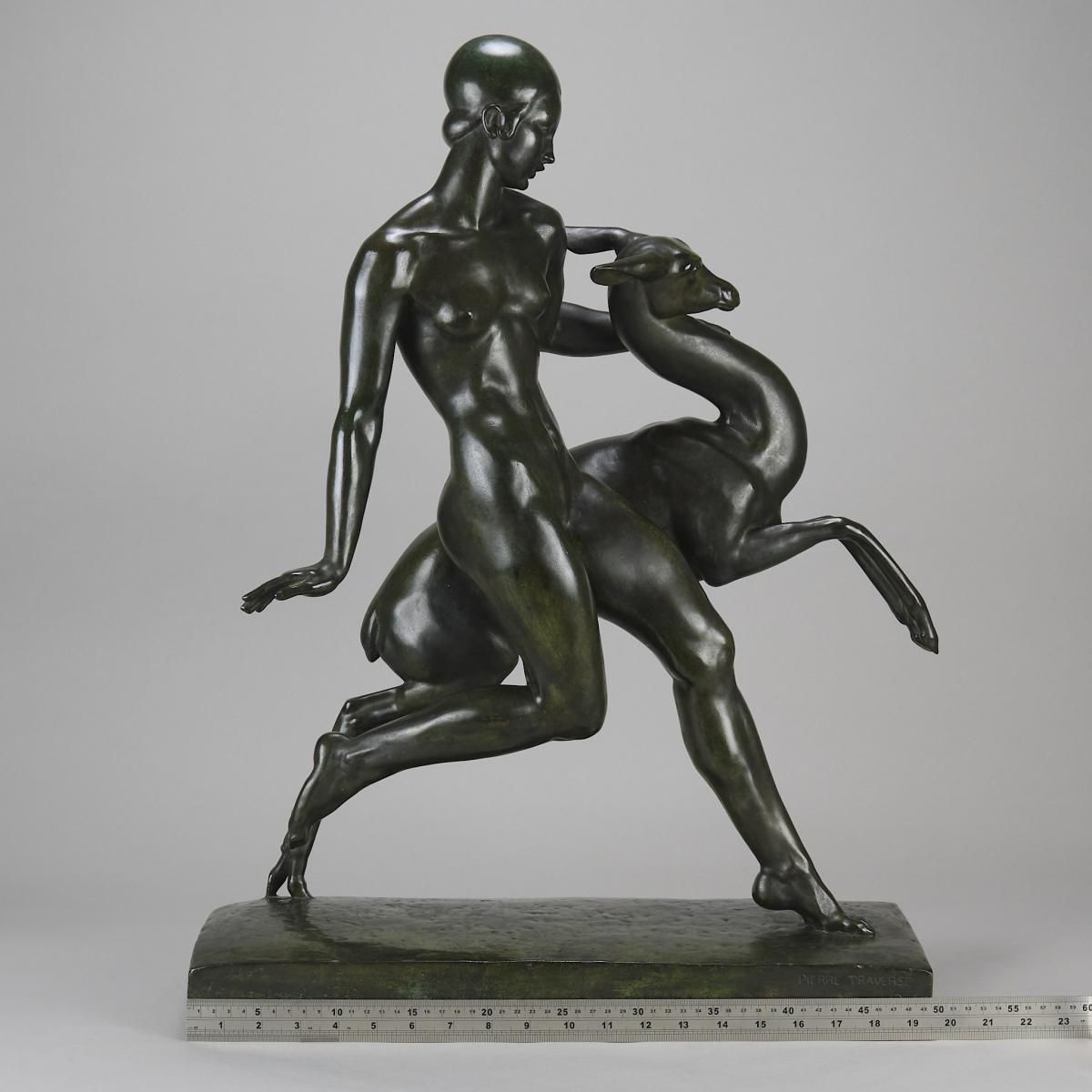
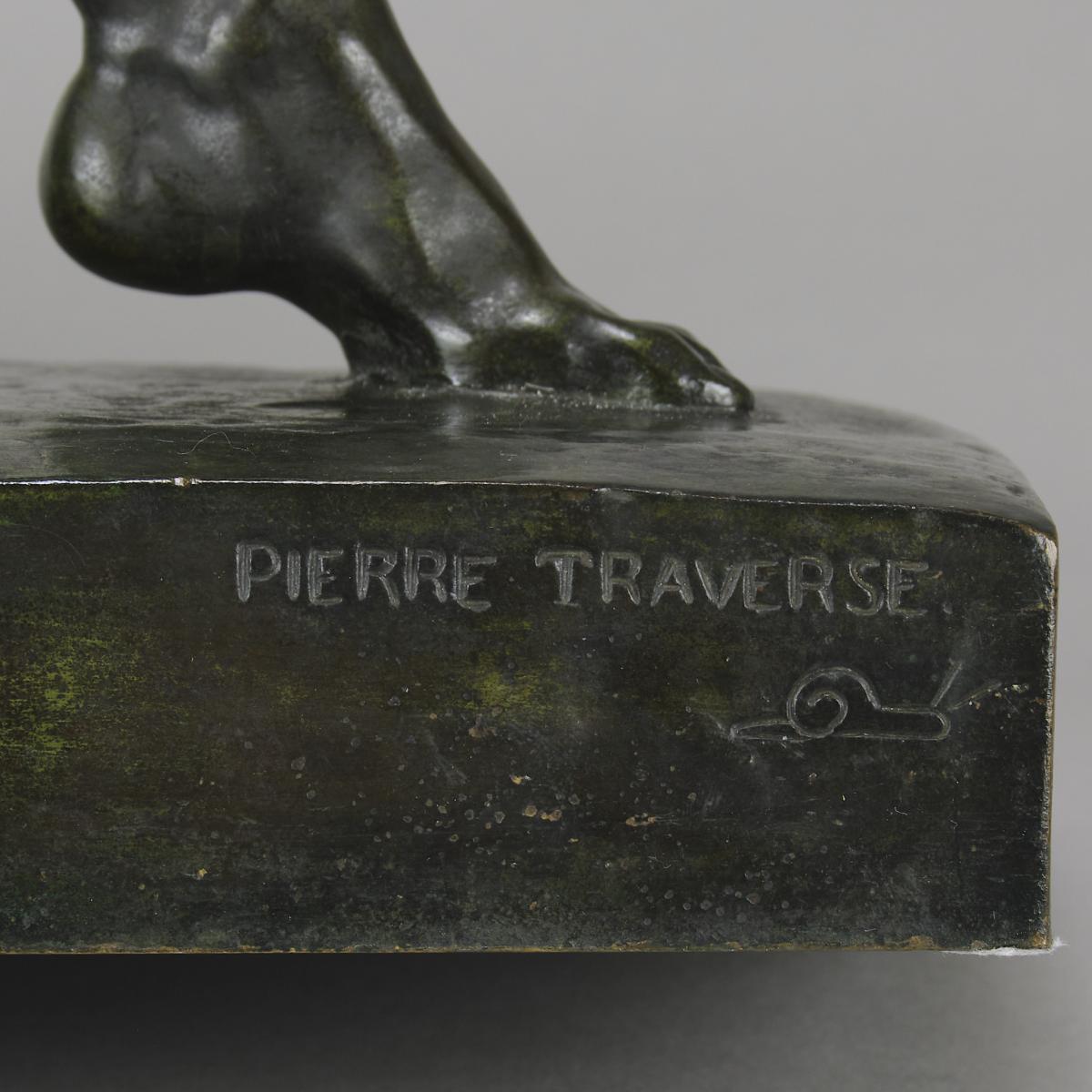
This object is eligible for a Certificate of BADA Provenance
The BADA Standard
- Since 1918, BADA has been the leading association for the antiques and fine art trade
- Members are elected for their knowledge, integrity and quality of stock
- Our clients are protected by BADA’s code of conduct
- Our dealers’ membership is reviewed and renewed annually
- Bada.org is a non-profit site: clients deal directly with members and they pay no hidden fees
A large and impressive Art Deco bronze group of an athletic beauty running alongside a prancing Deer, with fabulous rich green and black patina and very fine hand finished surface detail, signed P Traverse with the impressed Rudier foundry mark of a snail.
ADDITIONAL INFORMATION
Height: 67 cm.
Width: 50 cm.
Depth: 20 cm.
Condition: Excellent Original Condition.
Circa: 1930.
Materials: Bronze.
SKU: 8931.
ABOUT
Pierre Traverse (1892 – 1979) was a French sculptor, who was born in Saint-André-de-Cubzac. Pierre Traverse was born on 1 April 1892 in Saint-André-de-Cubzac in the Dordogne in France. His father sent him to Limoges to study and he then enrolled at the École des Beaux-Arts in Paris and was attached to the studios of Jean-Antoine Injalbert. In Paris he exhibited at the Salon des Artistes Français, of which he was an hors-concours member, the Salon d'Automne and the Salon des Artistes Décorateurs. His first showing at the Salon des Artistes Français was a group composition entitled "Les Présents de la Terre". He received a silver medal in 1921, a gold medal in 1926 and a diploma of honor in 1937 at the Exposition Internationale in Paris. He was also awarded a medal of honor in 1942 and was decorated with the Légion d'honneur in 1938. Works by Traverse can be found in the Musée du Petit Palais in Paris. Traverse died in 1979.
The Art Deco Period
The Art Deco Period: although Art Deco derives its name from the great 1925 Paris Exhibition, ‘L’Exposition Internatlionale des Arts Décoratifs et Industriels Modernes’, the term is now generally applied to the typical artistic productions of the 1920’s and 1930’s. It might best be characterised as an attempt to unite arts with industry, embracing the machine age and repudiating the old antithesis of ‘Fine’ and ‘Industrial’ art. The sources of the Art Deco movement include Egyptian and Mayan Art, Cubisim, Fauvism and Expressionism, heavily influencing the chief force underlying all Art Deco with the emphasis upon geometric patterns.
Stock number
8931The BADA Standard
- Since 1918, BADA has been the leading association for the antiques and fine art trade
- Members are elected for their knowledge, integrity and quality of stock
- Our clients are protected by BADA’s code of conduct
- Our dealers’ membership is reviewed and renewed annually
- Bada.org is a non-profit site: clients deal directly with members and they pay no hidden fees


